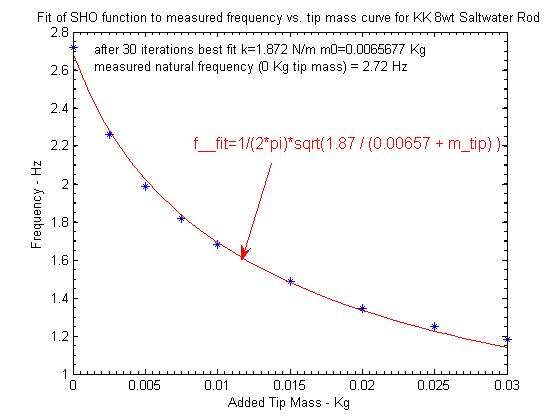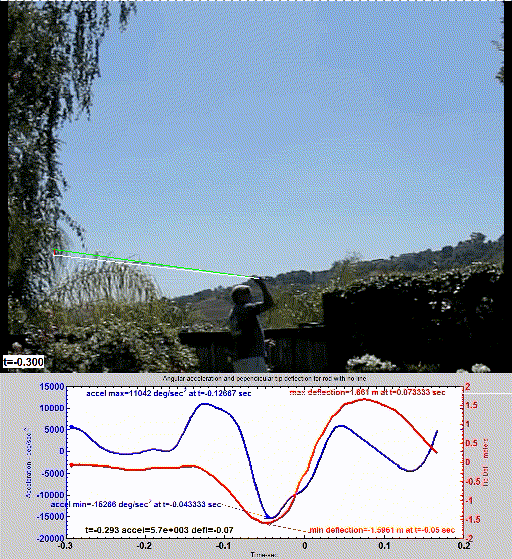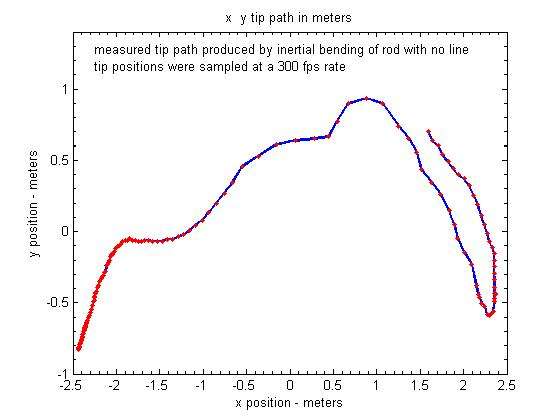What type of rod were you using?
It was a KK 8 wt saltwater rod.
I did not do the freq vs tip mass measurement for that orignial rod so I do not have measured values for it other than knowing it had a NF of around 2.7 Hz.
I broke the tip of the original rod in an ill-fated attempt to measure the twisting torque it had due to its spine. Its replacement blank had the k and mo values noted below.

Gordy





